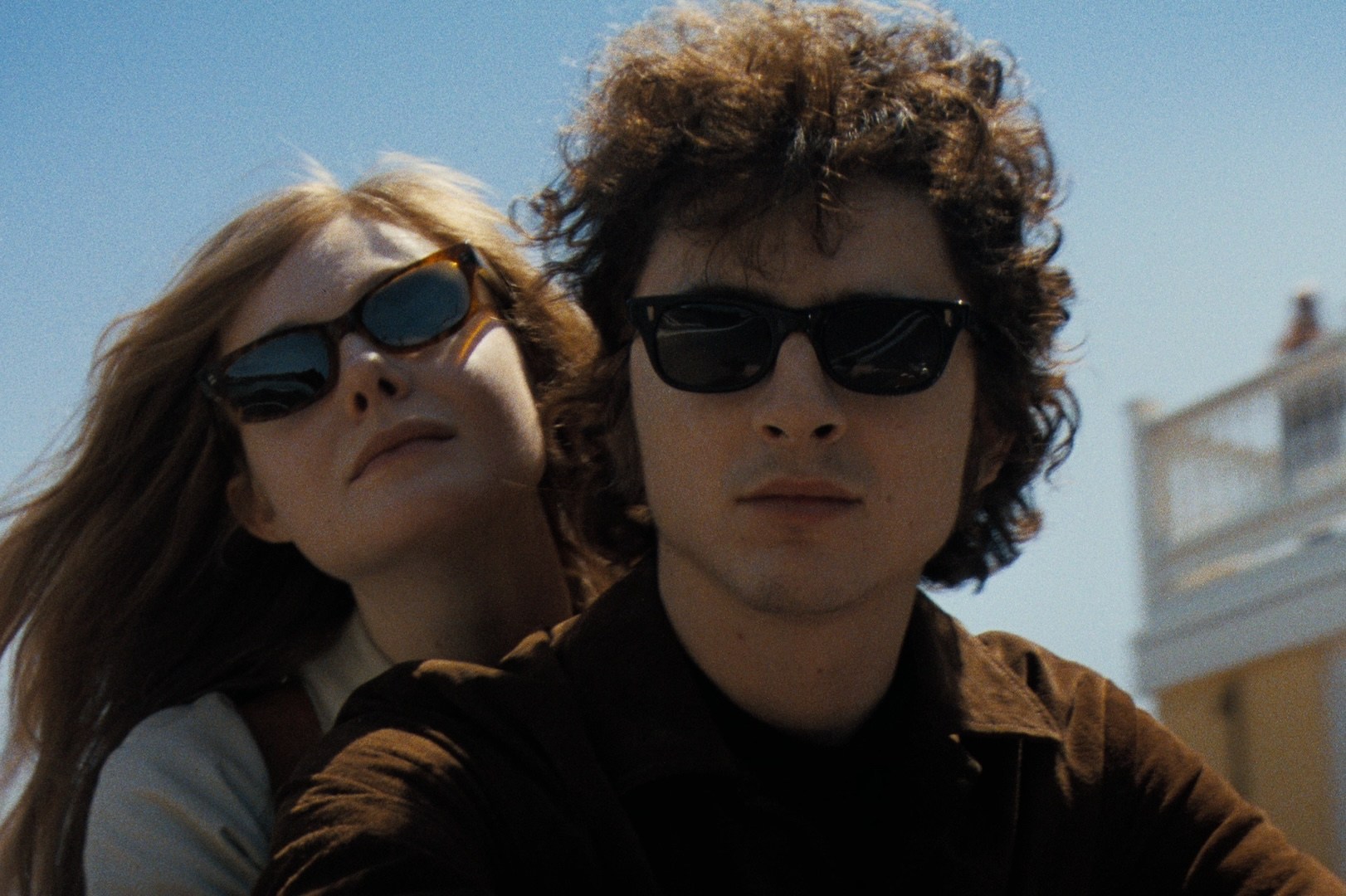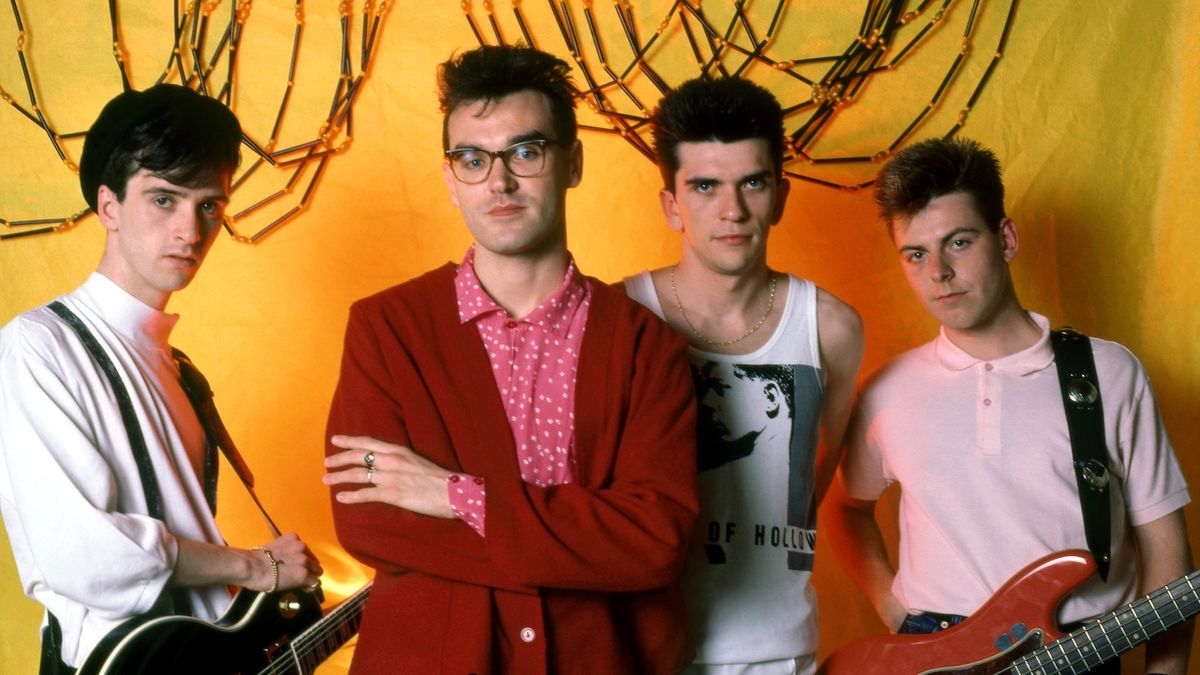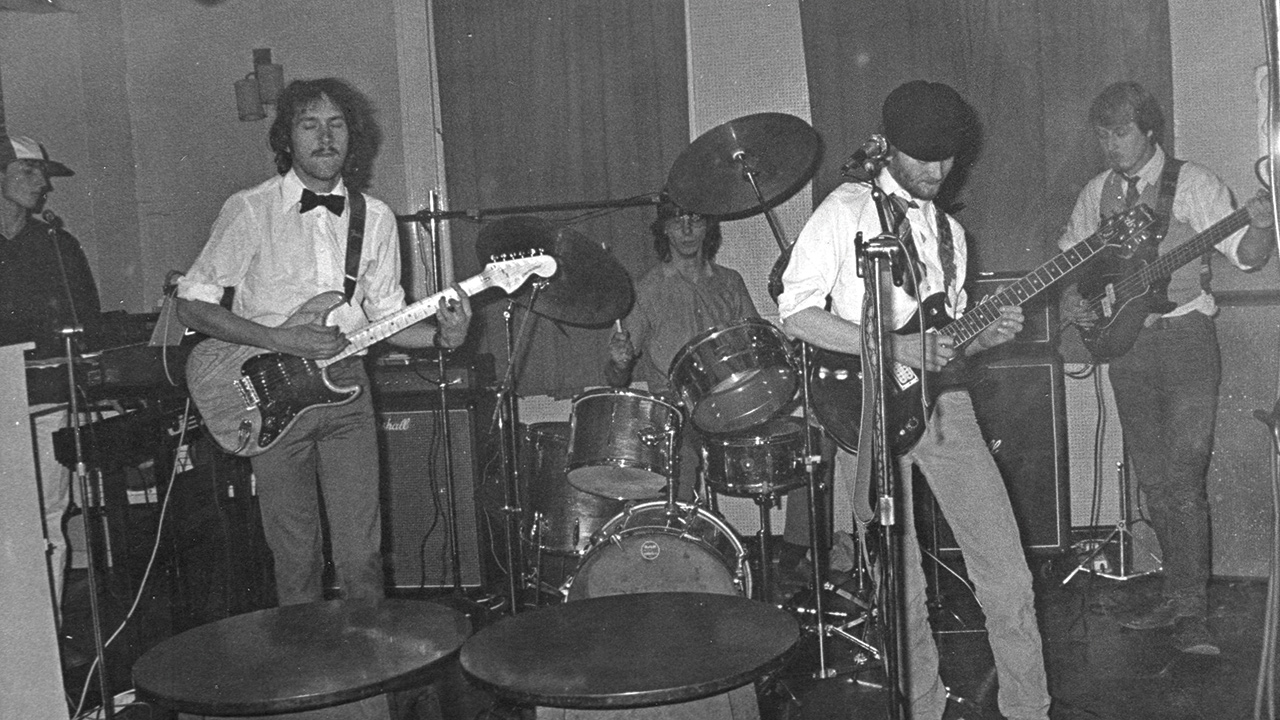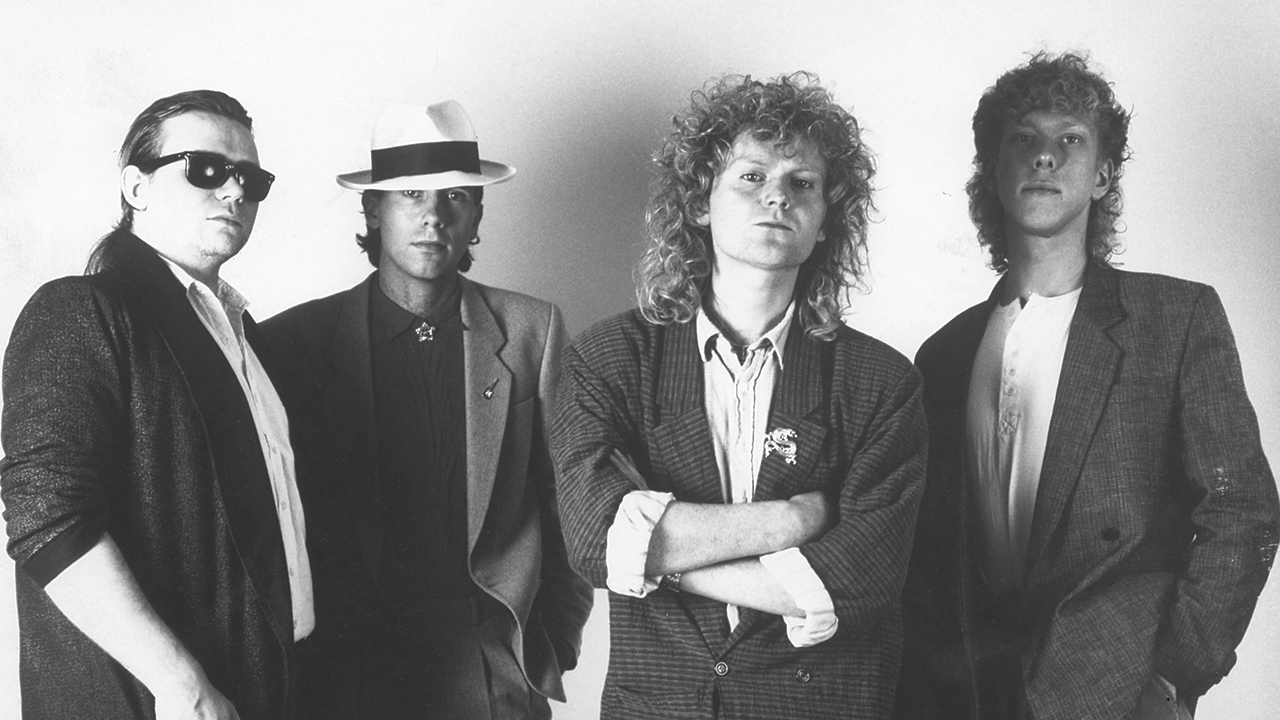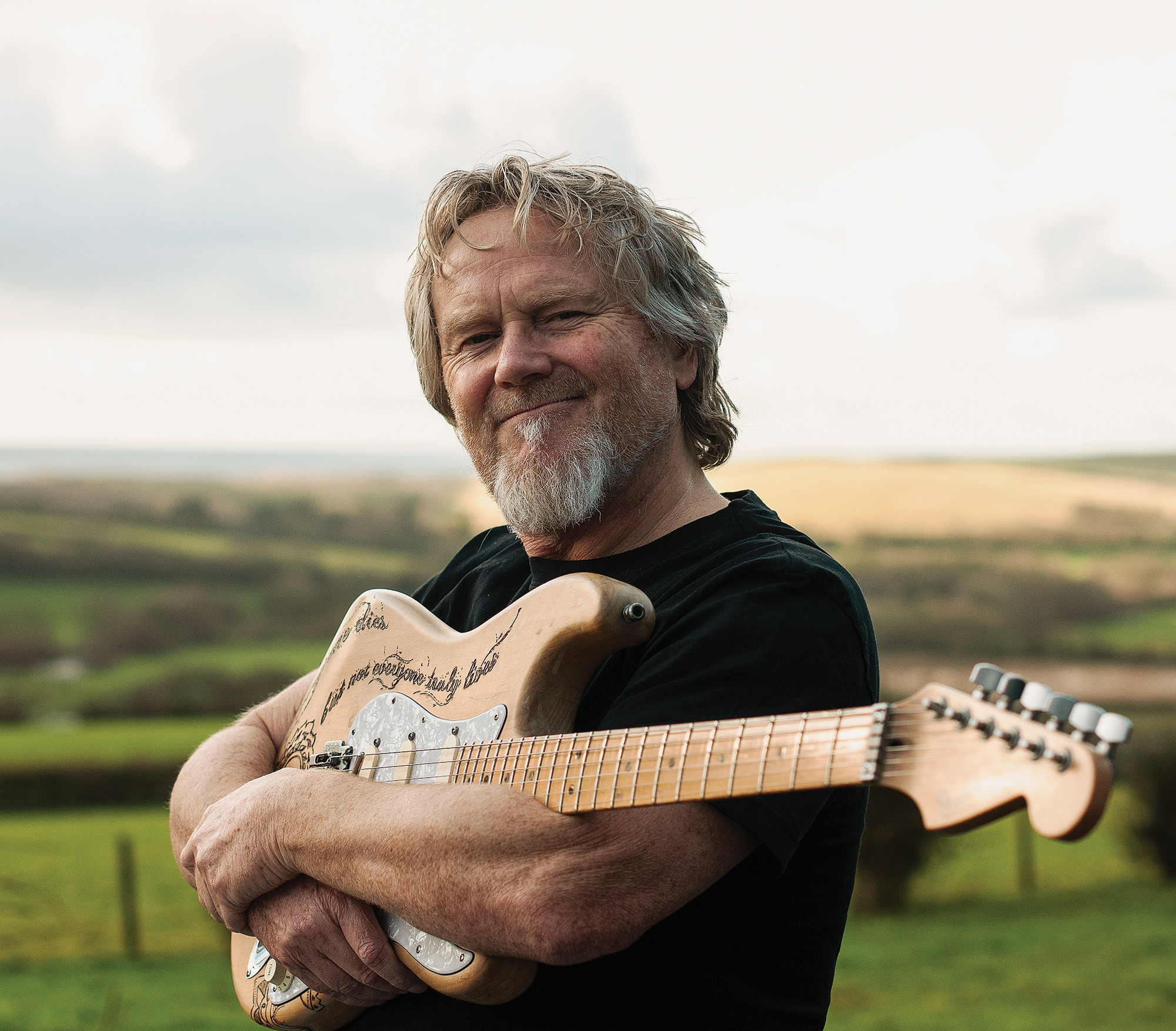
Feature Photo: Ben Houdijk -Shutterstock.com
The Pretenders occupy a unique space in rock history, bridging the urgency of punk with the sophistication of classic songwriting. Chrissie Hynde’s unshakable vision shaped a band that never conformed to expectations, delivering music that was aggressive, melodic, and unapologetically direct. From their earliest recordings, they blended sharp lyricism with musicianship that was as precise as it was forceful, making them one of the most distinctive rock acts of their time. This list highlights ten of their most powerful songs—tracks that capture the band at their most dynamic, showcasing their ability to fuse intensity with innovation.
These songs reflect the breadth of the Pretenders’ rock sensibilities. “Tattooed Love Boys” pushed against convention with its jagged rhythms and biting vocal delivery, while “Bad Boys Get Spanked” leaned into unfiltered aggression. “Middle of the Road” paired Hynde’s acerbic observations with one of her most commanding performances, and “Money Talk” reveled in its blues-infused swagger. “Lie to Me” channeled a raw, Stones-like energy, while “Time the Avenger” carried a simmering tension that set it apart. “The Adultress” wove defiance and desire into a darkly compelling narrative, while “Boots of Chinese Plastic” proved the band’s ability to evolve without sacrificing their edge. “Mystery Achievement” built a relentless momentum, culminating in an explosive climax, while “Precious” encapsulated the band’s early sound in a burst of unfiltered punk energy.
# 10 – Mystery Achievement – Pretenders
We open up our Pretenders most rocking songs list with one of our favorites from their debut album. Recorded at Wessex Sound Studios and AIR Studios in London between 1978 and 1979, “Mystery Achievement” closed out Pretenders, the debut album that catapulted the band into critical and commercial success upon its release in January 1980. Produced by Chris Thomas, the song featured Chrissie Hynde on vocals and rhythm guitar, James Honeyman-Scott on lead guitar and keyboards, Pete Farndon on bass, and Martin Chambers on drums. Unlike some of the band’s more radio-friendly singles, “Mystery Achievement” stretched past five minutes.
“Mystery Achievement” conveyed a sense of frustration and disillusionment, with Hynde delivering lines like “I had my dreams like everybody else / But they’re out of reach” in a tone that mixed defiance with resignation. The lyrics suggested an ambiguous struggle, possibly referencing the challenges of personal ambition or the complexities of relationships. The song’s refrain, “Mystery achievement, you’re on my mind,” reinforced the idea of an elusive goal or desire that remained just beyond reach. Unlike the introspection of “Kid” or the strutting confidence of “Brass in Pocket,” this track presented a more ambiguous, restless energy, underscored by its relentless groove. The song’s foundation lay in a hypnotic bassline from Farndon, giving it an almost trance-like momentum. This is a good one!
# 9 – Boots of Chinese Plastic – Break Up the Concrete
“Boots of Chinese Plastic” opened Break Up the Concrete, the Pretenders’ ninth studio album, released on October 7, 2008. Recorded at Sage and Sound Studios in Hollywood, California, the album marked a departure from the band’s polished pop-rock sound of the previous decade, embracing a raw, stripped-down aesthetic influenced by rockabilly and early rock ‘n’ roll. The song featured Chrissie Hynde on vocals and rhythm guitar, James Walbourne on lead guitar, Nick Wilkinson on bass, pedal steel guitarist Eric Heywood, and drummer Jim Keltner, whose loose, organic drumming defined much of the album’s sonic identity. Unlike many of the Pretenders’ earlier records, Break Up the Concrete was recorded quickly, with a live-in-the-studio approach that captured the urgency and grit of the band’s earliest work.
Lyrically, “Boots of Chinese Plastic” blended spiritual and philosophical imagery with Hynde’s signature sharp, conversational tone. The song referenced Buddhist and Hindu religious figures—”Nam Myoho Renge Kyo, Buddha please,” “Hare Krishna, Hare Rama”—while also touching on themes of reincarnation and karmic cycles. The refrain, “Every drop that run through the vein / Always makes its way back to the heart again,” reinforced the idea of inevitable return, a concept central to both spiritual teachings and Hynde’s own recurring themes of resilience and renewal. However, the song avoided becoming preachy or overtly mystical, instead maintaining a playful, almost punk-like energy, as seen in the wryly delivered line, “And by the way you look fantastic in your boots of Chinese plastic.”
Musically, the song delivered a relentless, high-energy attack driven by Walbourne’s razor-sharp rockabilly guitar work. His lead playing injected the track with a sense of urgency and swagger, recalling the raw, unfiltered energy of early Pretenders material while also nodding to classic rock influences. Unlike the tightly controlled arrangements of earlier records, “Boots of Chinese Plastic” thrived on its looseness, with Keltner’s drumming lending a rolling, almost improvisational quality. The fusion of breakneck tempos and intricate guitar work gave the song a unique place in the Pretenders’ catalog, positioning it as one of the most electrifying moments on Break Up the Concrete.
Within the context of this list, “Boots of Chinese Plastic” shared a similar intensity with “Mystery Achievement,” though the latter leaned more toward post-punk atmospherics, whereas this track embraced rockabilly revivalism. Both songs demonstrated the Pretenders’ ability to blend sharp lyricism with driving instrumentation, though “Boots of Chinese Plastic” had a more freewheeling, spontaneous energy compared to the taut, controlled structure of “Mystery Achievement.” The song’s stripped-down approach also contrasted with the more polished production of earlier Pretenders hits, reinforcing the album’s back-to-basics ethos.
# 8 – Lie To Me – Loose Screw
“Lie to Me” kicked off Loose Screw, the Pretenders’ eighth studio album, which was released on November 12, 2002. Recorded between June 2001 and April 2002 at RAK Studios and Sony Music Studios in London, as well as Axis Studios in New York City, the album marked a shift in the band’s sound, incorporating reggae influences while still maintaining their rock foundation. Produced by Jonathan Quarmby and Kevin Bacon, the album featured Chrissie Hynde on vocals and rhythm guitar, Adam Seymour on lead guitar, Andy Hobson on bass, and Martin Chambers on drums. The song’s raw, unfiltered energy immediately set the tone for Loose Screw, presenting a no-nonsense, driving rock sound that harkened back to the band’s early years.
The song’s opening riff bore a striking resemblance to the kind of swaggering, blues-infused guitar work that defined classic Rolling Stones tracks like “Jumpin’ Jack Flash.” Seymour’s jagged, overdriven tone propelled the track forward, reinforcing the song’s attitude-heavy delivery. Chambers’ drumming maintained a relentless pace, underscoring Hynde’s vocals, which oscillated between controlled detachment and bursts of simmering frustration. The band’s decision to keep the arrangement lean and tightly wound allowed the song’s intensity to remain at the forefront, avoiding any unnecessary embellishments that might dilute its punch.
Lyrically, “Lie to Me” encapsulated Hynde’s signature mix of cynicism and vulnerability. The song unfolded like an unraveling confrontation, with Hynde addressing a deceptive lover with a mixture of bitterness and resignation. Lines such as “I got this feeling, is it what they call déjà vu?” and “It’s so long-winded, like a story without an end” painted a picture of someone trapped in a cycle of dishonesty and emotional exhaustion. The repetition of “If you lie to me again” drove home the song’s central theme—betrayal masquerading as familiarity. Hynde’s delivery, sharp and laced with sarcasm, added an extra layer of defiance to the lyrics, making it clear that while the deception might be expected, it would no longer be tolerated.
# 7 – Bad Boys Get Spanked – Pretenders II
“Bad Boys Get Spanked” delivered one of the most aggressive and unrelenting moments on Pretenders II, the band’s second studio album, released on August 7, 1981. Recorded between 1980 and 1981 at Wessex Sound Studios in London and Pathe Marconi Studios in Paris, the album was produced by Chris Thomas and featured the original Pretenders lineup: Chrissie Hynde on vocals and rhythm guitar, James Honeyman-Scott on lead guitar and keyboards, Pete Farndon on bass, and Martin Chambers on drums. In contrast to the more refined and melodic singles from the album, this track embraced raw punk energy, channeling a feral intensity that set it apart from much of the band’s early catalog.
From the outset, “Bad Boys Get Spanked” relied on a jagged, almost menacing riff that reinforced its confrontational tone. Honeyman-Scott’s guitar work veered into garage rock territory, with Hynde’s vocals alternating between taunting sneers and frenzied howls. Chambers’ drumming drove the song forward with unrelenting force, while Farndon’s bass added weight to its pulsing rhythm. The track’s relentless pace and aggressive delivery aligned it with the harder-edged side of the Pretenders’ sound, making it one of the most blistering rockers on Pretenders II. While some tracks on the album, such as “Message of Love,” balanced melody with grit, “Bad Boys Get Spanked” remained wholly unapologetic in its fury.
Lyrically, the song unfolded as a sneering attack on authority and societal expectations, with Hynde addressing an unruly male figure who thrives on defying the rules. Lines like “You deliberately defy the rules / ‘Cause the law’s upheld by fools” exuded a rebellious spirit, reinforcing the track’s punk credentials. The recurring chant of the title underscored the song’s biting sarcasm, and the final refrain, “Come here, get spanked,” solidified the track’s mix of aggression and dark humor. Compared to the more cryptic lyricism of “Mystery Achievement,” this song made its themes of defiance unmistakably clear.
Within the context of this list, “Bad Boys Get Spanked” shared the reckless energy of “Lie to Me” but leaned even further into punk nihilism. Where “Lie to Me” channeled its frustration through blues-based guitar riffs reminiscent of the Rolling Stones, this track embraced a more primal, guttural attack. Similarly, while “Boots of Chinese Plastic” relied on speed and rockabilly-inspired rhythms, “Bad Boys Get Spanked” was pure ferocity, foregoing polish in favor of brute force.
The song’s sheer intensity and confrontational tone made it a defining moment on Pretenders II, an album that captured the band at the peak of their original lineup’s power. Though it was never released as a single, “Bad Boys Get Spanked” became a cult favorite among fans who gravitated toward the Pretenders’ heavier side.
# 6 – Money Talk – Last Of The Independents
“Money Talk” emerged as one of the hardest-hitting tracks on Last of the Independents, the Pretenders’ sixth studio album, released on May 9, 1994. The album was recorded between October 1993 and February 1994 at Townhouse and Sarm West Studios in London, as well as The Wool Hall in Bath. Produced by Stephen Street, Ian Stanley, and Chris Thomas, the album featured a revolving lineup of musicians, though Chrissie Hynde and guitarist Adam Seymour provided the foundation. Bass duties were handled by Andy Hobson, Andy Rourke, Tom Kelly, and David Paton, while drummers included Martin Chambers, Jimmy Copley, and J.F.T. Hood.
Musically, “Money Talk” leaned into a blues-infused groove, anchored by a swaggering, slinky guitar riff. Seymour’s playing gave the track an unmistakable strut, complementing Hynde’s smoky, attitude-laced vocals. The rhythm section kept the song driving forward with a steady, pulsing beat, emphasizing the song’s defiant, streetwise energy. Unlike the more polished, radio-friendly production of Last of the Independents‘ lead singles, “Money Talk” thrived on its rawness, making it one of the most unapologetically aggressive songs on the album.
Lyrically, “Money Talk” was an unfiltered statement on transactional relationships and power dynamics, with Hynde adopting a sharp, almost sneering tone. Lines like “Twenty gets you straight, forty gets you other, think of what a hundred could do” painted a cynical picture of money’s influence over desire and morality. The track blurred the lines between empowerment and disillusionment, reinforcing the album’s broader themes of survival and self-preservation. In contrast to the anthemic resilience of “I’ll Stand by You” from the same album, this song exuded a hardened, streetwise realism, making no attempts to sugarcoat its message.
Within this list, “Money Talk” found common ground with the unrelenting force of “Bad Boys Get Spanked,” both tracks reveling in Hynde’s more confrontational, take-no-prisoners songwriting. However, where “Bad Boys Get Spanked” leaned into a punk-fueled attack, this track simmered with a bluesy, slow-burning intensity. It also shared thematic ties with “Lie to Me,” as both songs explored deception, though “Money Talk” framed its message within the transactional nature of power and influence rather than personal betrayal.
# 5 – Time The Avenger – Learning To Crawl
“Time the Avenger” was recorded during the sessions for Learning to Crawl, the Pretenders’ third studio album, which was released on January 13, 1984. The album was recorded between mid-1982 and late 1983 at AIR Studios in London, with Chris Thomas producing. It marked the band’s resurgence following the tragic deaths of original guitarist James Honeyman-Scott and bassist Pete Farndon. The new lineup featured Chrissie Hynde on vocals and rhythm guitar, Robbie McIntosh on lead guitar, Malcolm Foster on bass, and Martin Chambers on drums. With a darkly atmospheric guitar riff and propulsive rhythm, “Time the Avenger” delivered one of the album’s most brooding and hard-driving moments, embodying the themes of impermanence and existential reckoning that permeated Learning to Crawl.
Musically, the track built itself around a hypnotic, circling guitar figure from McIntosh, reinforcing the song’s relentless, almost ominous tone. Chambers’ drumming provided a steady, pounding backbone, while Foster’s bass locked in to create an unshakable groove. Hynde’s vocals carried a mix of detachment and simmering intensity, delivering the lyrics with a knowing sense of inevitability. Compared to the raw aggression of “Bad Boys Get Spanked” or the blues-infused swagger of “Money Talk,” this song moved at a more deliberate, tension-filled pace, allowing its themes to settle in rather than explode outward.
Lyrically, “Time the Avenger” painted a cynical portrait of a man who believed himself invincible in his professional and personal life, only to realize that time itself was the ultimate equalizer. Lines like “Nobody’s perfect, not even a perfect stranger” and “Even your wife and kids could be gone next year” encapsulated the song’s central theme—the inescapability of change and the consequences of taking life for granted. The repeated refrain, “Sounds like time the avenger,” drove home the inevitability of reckoning, mirroring the relentless ticking clock referenced throughout the track. Compared to the direct, biting attack of “Lie to Me,” this song took a more observational approach, dissecting its subject with a slow-burning intensity rather than outright confrontation.
Within the broader scope of Learning to Crawl, “Time the Avenger” reinforced the album’s thematic concerns of survival, adaptation, and reckoning with loss. It stood alongside tracks like “Middle of the Road” in its driving rock energy but carried a more subdued, haunting undercurrent.
# 4 – The Adultress – Pretenders II
“The Adultress” opened Pretenders II, the band’s sophomore album released on August 7, 1981. Recorded between 1980 and 1981 at Wessex Sound Studios in London and Pathe Marconi Studios in Paris, the album was produced by Chris Thomas and featured the original Pretenders lineup: Chrissie Hynde on vocals and rhythm guitar, James Honeyman-Scott on lead guitar and keyboards, Pete Farndon on bass, and Martin Chambers on drums. The track established a bold, searing tone right from the start, combining a muscular riff with an undercurrent of raw tension. Unlike some of the album’s more polished tracks, “The Adultress” thrived on its jagged edges and relentless energy, embodying the band’s ability to blend new wave attitude with rock-and-roll grit.
Musically, “The Adultress” drove forward with a sinister, grinding groove, punctuated by Hynde’s snarling vocal delivery and Honeyman-Scott’s piercing guitar work. Chambers’ drumming remained forceful yet controlled, anchoring the song’s rolling momentum. The song’s tone was both menacing and seductive, reinforcing the charged themes of transgression and self-reckoning found in its lyrics. Compared to the punk-driven aggression of “Bad Boys Get Spanked,” this track carried a heavier, blues-influenced swagger, making it one of the more ominous cuts on Pretenders II.
Lyrically, “The Adultress” examined themes of desire, guilt, and defiance through Hynde’s characteristically sharp lens. Lines such as “I stand accused of the worst crime in history” and “Does misery love company? I’ll be in the bar, you’ll find me” captured the internal conflict of a narrator simultaneously embracing and condemning her own actions. The song refused to offer easy moral judgments, instead presenting a character who was both empowered and trapped by her choices. The interplay between Hynde’s vocals and the song’s grinding instrumentation heightened this tension, making the track as emotionally charged as it was musically relentless.
Within this list, “The Adultress” shared thematic weight with “Lie to Me,” both songs addressing deception and fractured relationships, though this track took a more internalized, almost noir-like perspective. Sonically, it occupied a similar space as “Money Talk,” with its gritty, blues-infused guitar and rhythmic stomp, though “The Adultress” leaned more into a dark, seductive atmosphere rather than outright cynicism. The song’s unflinching look at desire and consequence also placed it in contrast with “Time the Avenger,” which examined regret from a more distant, reflective stance.
# 3 -Tattooed Love Boys – Pretenders
“Tattooed Love Boys” was recorded during the sessions for Pretenders, the band’s self-titled debut album, which was released on January 11, 1980. The album was recorded between 1978 and 1979 at Wessex Sound Studios and AIR Studios in London, with Chris Thomas producing. Featuring Chrissie Hynde on vocals and rhythm guitar, James Honeyman-Scott on lead guitar, Pete Farndon on bass, and Martin Chambers on drums, the track stood out as one of the most aggressive and unrelenting songs in the band’s early catalog.
“Tattooed Love Boys” was built around a jagged, off-kilter rhythm that constantly shifted in time signature, making it one of the more complex tracks on Pretenders. Honeyman-Scott’s guitar work sliced through the mix with sharp, staccato phrases, while Farndon’s bassline and Chambers’ drumming provided a forceful, shifting foundation. Hynde’s vocal performance added another layer of intensity, her delivery alternating between playful and confrontational. The song’s dynamic shifts, particularly its sudden stops and tempo changes, kept the listener off balance, reinforcing the song’s chaotic energy. In contrast to the smoother, radio-friendly sheen of “Brass in Pocket,” this track felt raw and unfiltered, demonstrating the band’s ability to move seamlessly between melody and aggression.
Lyrically, “Tattooed Love Boys” presented one of Hynde’s most unsettling narratives, blending defiance, violence, and dark humor. The lyrics hinted at an experience of coercion and control, yet Hynde’s delivery refused to frame the narrator as a victim. Instead, lines like “I shot my mouth off and he showed me what that hole was for” were delivered with a mixture of provocation and sarcasm, making the song’s meaning all the more ambiguous. Unlike the more introspective reflection found in “Time the Avenger,” this track offered no easy conclusions, instead immersing itself in an atmosphere of recklessness and danger.
Within this list, “Tattooed Love Boys” shared the same blistering intensity as “Bad Boys Get Spanked,” though the latter leaned more into punk nihilism, while this song carried a more unpredictable, avant-garde energy. Its unrelenting forward motion also connected it to “Boots of Chinese Plastic,” though “Tattooed Love Boys” had a more menacing, angular feel. Compared to “Money Talk,” which dripped with bluesy swagger, this song was pure adrenaline, constantly teetering on the edge of chaos.
# 2 – Middle Of The Road – Learning To Crawl
“Middle of the Road” was recorded for Learning to Crawl, the Pretenders’ third studio album, which was released on January 13, 1984. The album was produced by Chris Thomas and recorded at AIR Studios in London, capturing the band’s resurgence following the deaths of original members James Honeyman-Scott and Pete Farndon. The new lineup featured Chrissie Hynde on vocals and rhythm guitar, Robbie McIntosh on lead guitar, Malcolm Foster on bass, and Martin Chambers on drums. Released as the album’s third single in late 1983 in the U.S. and in early 1984 in the U.K., the song showcased the Pretenders’ ability to deliver a driving, hard-edged rock track infused with biting social commentary and raw energy.
Musically, “Middle of the Road” built itself around a propulsive, straight-ahead rhythm, driven by Chambers’ thunderous drumming and McIntosh’s jagged, riff-heavy guitar work. The song’s relentless forward motion was punctuated by Hynde’s signature sneering vocal delivery, reinforcing the track’s themes of frustration and resilience. The composition followed a no-frills, blues-based rock structure, with Hynde later acknowledging that it shared chord similarities with the Rolling Stones’ “Empty Heart.” The song’s climax featured a searing harmonica solo, played by Hynde herself, adding an extra layer of grit before the track charged toward its emphatic conclusion. Compared to the raw aggression of “Tattooed Love Boys,” this song was more polished but carried an equally intense spirit.
Lyrically, “Middle of the Road” reflected Hynde’s sharp observational songwriting, blending autobiographical elements with pointed societal critiques. The verses addressed themes of economic disparity, Western imperialism, and the struggle for personal autonomy. Lines like “But when you own a big chunk of the bloody Third World / The babies just come with the scenery” juxtaposed wealth and poverty, while the refrain “I’m not the cat I used to be / I got a kid, I’m 33” provided a glimpse into Hynde’s own shifting perspective as she matured. Unlike the darker, more intimate subject matter of “The Adultress,” this track took a broader, outward-looking approach, making its message both personal and political.
Within this list, “Middle of the Road” aligned closely with “Time the Avenger,” as both tracks explored themes of inevitability and consequence, though this song carried a more aggressive, defiant energy. It also shared the driving, unrelenting pulse of “Bad Boys Get Spanked” but took a more structured, classic rock-inspired approach. The track’s balance of social commentary and sheer musical force placed it alongside “Money Talk,” though this song leaned less on blues swagger and more on pure rock propulsion.
Commercially, “Middle of the Road” became one of the Pretenders’ biggest hits, reaching No. 19 on the Billboard Hot 100 and No. 2 on the U.S. Mainstream Rock chart, where it remained for four weeks.
# 1 – Precious – Pretenders
“Precious” opened Pretenders, the band’s self-titled debut album, released on January 11, 1980. Recorded in 1979 at Wessex Sound Studios and AIR Studios in London, the track set the tone for the album with its brash, punk-infused energy and unfiltered attitude. Chrissie Hynde wrote the song and performed lead vocals and rhythm guitar, with James Honeyman-Scott on lead guitar, Pete Farndon on bass, and Martin Chambers on drums. Produced by Chris Thomas, “Precious” was the first song the original lineup played together in rehearsal, making it foundational to the Pretenders’ identity. Though it was not initially released as a standalone single, it appeared on compilations and became a defining track in the band’s early catalog.
Musically, “Precious” was an unrelenting, high-energy assault that blended punk rawness with new wave precision. Honeyman-Scott’s phased guitar tones cut through the mix with jagged stabs, complementing Chambers’ thunderous, fast-paced drumming. Farndon’s bass added weight to the track’s driving rhythm, while Hynde’s aggressive vocal delivery turned every line into a sneering proclamation. The song’s structure maintained a controlled chaos, with the instruments locked into a tight but aggressive groove, never relenting from its frenzied pace. Compared to the rhythmic pulse of “Middle of the Road” or the blues-inflected swagger of “Money Talk,” this song was pure punk aggression, stripped of any polish or restraint.
Lyrically, “Precious” was as confrontational as its sound, showcasing Hynde’s razor-sharp wit and refusal to conform. The lyrics moved between cryptic references and direct provocation, culminating in the now-iconic closing line: “But not me, baby, I’m too precious / I had to fuck off!” This moment, delivered with unrepentant force, became a feminist battle cry, embodying Hynde’s fearless persona. The song also contained references to her early years in Cleveland, with the line “Moving through the Cleveland heat” grounding it in her personal history. While “Tattooed Love Boys” also carried a sense of menace, this track delivered its attitude with unfiltered speed and venom rather than layered metaphor.
Within this list, “Precious” shared the same unrelenting energy as “Bad Boys Get Spanked,” though the latter leaned into darker, more overt themes of power dynamics. It also connected to “Boots of Chinese Plastic” in its breathless, rapid-fire delivery, though “Precious” remained the more stripped-down and immediate of the two. Unlike the introspection of “Time the Avenger,” this track lived entirely in the moment, refusing to reflect or soften its attack.
“Precious” became a defining moment for the Pretenders, proving that they could merge punk’s raw energy with their own brand of sharp, observational songwriting. Though it never charted as a single, it remained one of their most enduring tracks, with critics consistently ranking it among their best. Its uncompromising attitude and relentless momentum made it the perfect closing song for this list, encapsulating everything that made the Pretenders one of the most powerful rock bands of their era.
Read More: Classic Rock Bands List And Directory
10 Most Rocking Pretenders Songs article published on Classic RockHistory.com© 2024



